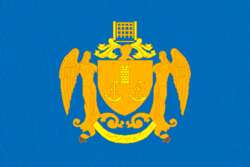| Cambay State Khambhat State | |||||||||
|---|---|---|---|---|---|---|---|---|---|
| Independent (1730-1753) State under the Maratha Confederacy (1753-1803) Protectorate of the East India Company (1803-1857) Princely state of the British Raj (1857–1947) Under the Dominion of India (1947–1948) | |||||||||
 Cambay State in modern state of Gujarat | |||||||||
| Capital | Khambhat | ||||||||
| Area | |||||||||
• 1901 | 906 km2 (350 sq mi) | ||||||||
| Population | |||||||||
• 1901 | 75,122 | ||||||||
| Government | |||||||||
| • Motto | "Dar Babi Farhat" ("This Is the Gate of Joy") | ||||||||
| Nawab | |||||||||
• 1730–1742 (first) | Mumin Khan I | ||||||||
• 1915–1948 (last) | Yawar Khan II | ||||||||
| |||||||||
| This article incorporates text from a publication now in the public domain: Chisholm, Hugh, ed. (1911). "Cambay". Encyclopædia Britannica (11th ed.). Cambridge University Press. | |||||||||


Khambhat state or Cambay state was a kingdom and later princely state in India during the British Raj. The city of Khambhat in present-day Gujarat was its capital. The state was bounded in the north by the Kaira district (Kheda) and in the south by the Gulf of Khambhat.
Contents
- History
- Hub of Mercantile activity
- List of rulers
- Rulers
- Details About Lives of Nawabs of Cambay state
- See also
- References
- External links
Cambay was the only state in the Kaira Agency of the Gujarat division of the Bombay Presidency, which merged into the Baroda and Gujarat States Agency in 1937.

